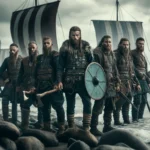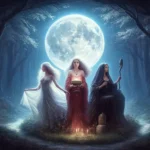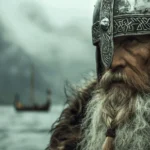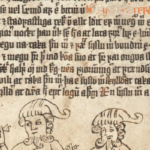Questions of destiny and pre-determined fate loom large in Viking culture. They believed that the moment of every person’s death was preordained from the moment of their birth and that even the gods are subject to the laws of fate. The Ragnarok prophecy tells the story of the death of all the gods, which is inevitable and cannot be averted, even by Odin himself.
Let’s take a closer look at ideas of fate and destiny within Norse culture during the Viking age.
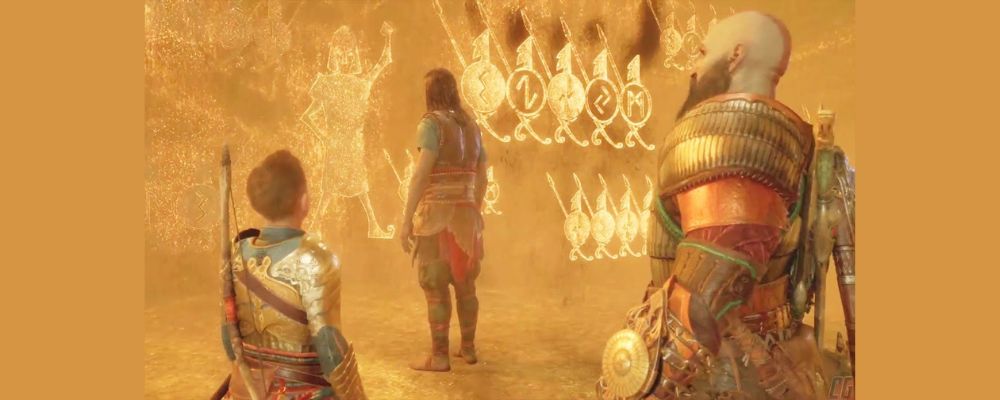
The Norns – The Norse Fates
While ancient Greek religion had the fates known as the Moirai, Norse religion has the Norns. What we know about these female divinities is pieced together from fragmented references in the surviving texts.
There are many Norns, and they seem to be divine spirits linked with the different races that inhabit the nine worlds of the Norse cosmos. The sources say there are Norns of the Aesir, Vanir, Elves, Dwarves, and Mankind. Each is probably responsible for overseeing the fates of their race.
In addition to these, there are three principal Norns. These sisters live beside the Well of Udr, the Well of Fate that sits at the base of Yggdrasil, the world tree. They take water from the well to nourish the tree and prevent it from rotting. It is also here that the sisters create fate. They are sometimes described as weaving fate on a loom and, at other times, writing it into the bark of Yggdrasil with the runes.
It is probably these three Norns that write the greater fate of all living things, while their lesser sisters deal with individual fates. The word Norn derives from the Old Norse word for twine and is probably a reference to their weaving.
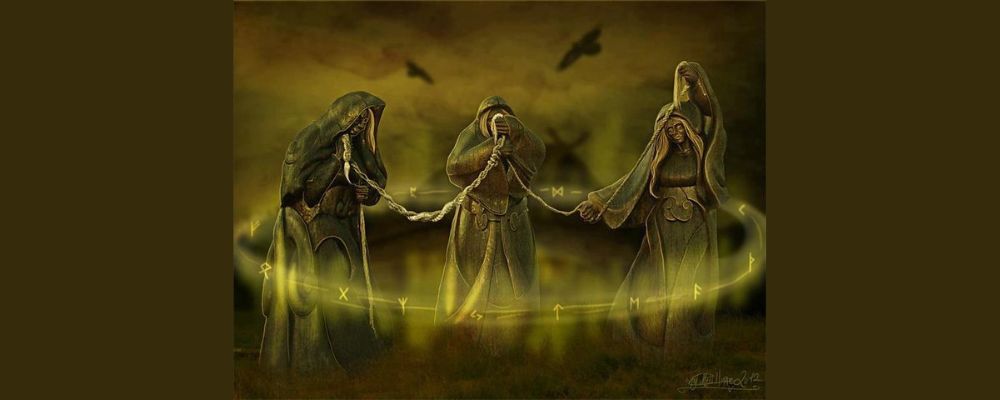
The Three Sisters
According to one story, the three main Norns are giantesses, or the fates of the giants. When they moved from Jotunheim to the Well of Udr, they put an end to the golden age of the gods. It is not clear what this meant, but maybe the power of the gods was diminished as they took control of greater destiny.
Each of the sisters is individually named.
The eldest sister is named Urd, whose name means “what once was”. In surviving sources, the word Urd is used interchangeably for fate and death, suggesting that the two were considered one and the same by the Vikings.
The middle sister is Verdandi, and her name means “coming into being”, and therefore things of the present. Her name also means birthing, perhaps suggesting a link between being born and the start of one’s fate.
The youngest sister is called Skuld, which means “that which shall be”. But her name also derives from the word debt and seems to carry connotations of things that one is answerable for, and which are inescapable.

Strings of Fate
The Vikings believed that a Norn visited a person when they were born, and at that moment, decided how long the person would live, the length of their life string.
The Vikings believed that the moment of their death was predetermined and could not be avoided. But while they could not control when they died, they could control how they died, and the Vikings believed that it was necessary to face death with bravery.
The gods themselves are an example of this. They all prepare to battle at Ragnarok, even though they know it is the end. This also links to the idea that the bravest fallen warriors earn a place in Valhalla. This gives them a second fate as they become destined to fight and die alongside the gods at Ragnarok.
But while the length of a person’s life is predetermined, not everything that will happen in their lives is static. The Norns are described as constantly weaving, changing fate as different strings cross one another. In this way, one’s actions can change the course of one’s life, though not the end of it, and a Viking would strive to plot a strong and gleaming path across the tapestry of destiny.
This is important not only for them individually but also for their descendants, as the position of their string determines the starting point of their descendants. This is why the sagas almost always begin with an account of the great deeds of the ancestor of the hero because this is an essential part of the hero’s story.

Malevolent Fate
Despite being giantesses, the Norns are not described as malevolent. Nevertheless, it is not uncommon to hear the cruelty of the Norns blamed for some of life’s challenges.
In the Helgakrida Hundingsbana II, Helgi blames the Norns for the fact that he must kill Sigrun’s father and brother to be able to marry her.
The dwarf Advari, who is robbed of all his treasure by Loki, blames fate for this cruel predicament before cursing a ring, the finest treasure in his collection, when Loki takes it.
The Valkyrie Brynhild blames the Norns for her ongoing yearning for Sigurd and the fact that she prefers him to die than not be together.
Blaming the fates seems to be one way to justify outrageous behavior.
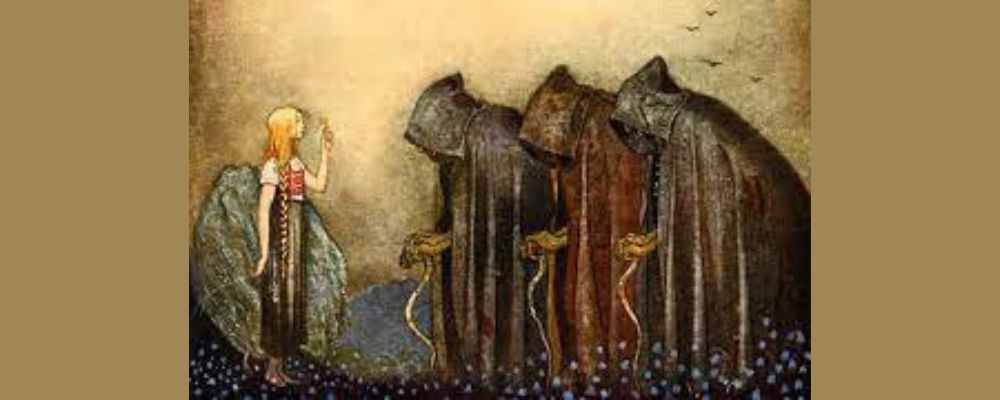
The Magic of Fate
In the Fanismal, the dwarf-turned-dragon Fafnir warns of the futility of challenging fate, describing it as like rowing a boat into a fierce wind. But this does not mean that there is no way to change fate.
Seidr, the folk magic practiced by the Vikings, is all about seeing and influencing fate. The word Seidr can mean to tie or tether and refer to a rope or string. The female practitioners, Volva, also carried a distaff as a kind of magic wand, the same tool used in spinning. All of this suggests that they are tapping into the tapestry of destiny.
Odin himself is a master of Seidr magic, and he learned the practice from the goddess Freyja, who is one of the Vanir gods. While the Aesir are strongly linked with ideas of order and control, the Vanir are linked with a more free-spirited approach to life. Perhaps this makes them particularly suited to surfing the inevitable changing waves of fate.
Rune magic may also have been linked to tapping into and changing fate. It is said that Odin saw the Norns using the runes in their home and the base of Yggdrasil and was jealous of the knowledge. He hung himself from the tree for nine days and nine nights while pierced by his own spear to learn the secrets of the runes, which he then shared with mankind. We hear of many Viking warriors who were also runemasters.
Therefore, it seems highly possible that rune magic also works by changing fate. Again, it can probably not change the final end of a person’s fate, but it can change the course of their weaving.

Norse Symbol of Fate
In modern Norse culture and Aesir religion, the symbol known as the Web of Wyrd, which is the Anglicized version of Urd, is linked with fate. The crossing lines represent the tapestry of destiny. However, there is no evidence that this symbol was used before the 1990s.
But that is not to say that there are no Norse symbols associated with fate.
Many of the magical runic staves found in the 18th-century Icelandic manuscripts seem to suggest that they work by changing fate. Of course, it must be noted that the magic represented in these grimoires is a mix of traditional Nordic magic and more modern Christian traditions. How well they represent rune magic as it was practiced in the Viking age is unclear.

Aegishjalmur, the Helm of Awe, ensures success in battle. Ad Unni will help you to get a girl. Feingur can grant fertility. Kaupaloki allows you to prosper in trade and business. Lukkustafir ensures that you encounter no evil on land or at sea.
Within this context, Draumstafir is particularly interesting. It is described as ensuring sweet dreams about unfulfilled desires. If you want to try it, you must carve the symbol onto silver or white leather on St John’s night (Midsummer’s eve) and keep it with you when you sleep.
But the Vikings believed that dreams could be prophetic. With fate already written, there is no reason you can’t grab a glimpse of it in a dream state.
But what if Draumstafir not only lets you see the future but change it, perhaps through lucid dreaming? If you change your fate in your dreams, does it change in reality?
The Valknut is also a symbol associated with fate as it represents Valhalla, the afterlife destiny that Viking warriors seek for themselves. Check out the Valknut pieces in the VKNG collection.





